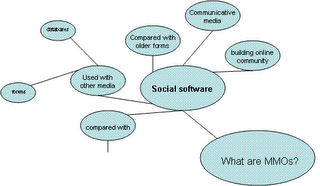
Yesterday's session on systematic review searching was an eye-opener. It turns out that I've been doing systematic review searching the whole time, but never knew it! It's no wonder why researchers have kept on insisting that I keep a list of my search terms and databases in my literature searches. As an uninformed searcher, I had wondered why do they need it? They've got the articles, they're useful, why do they need to be so careful about such seemingly "unimportant" data?
I'll ask the question again: Why do we need systematic review searching? The reason, as Mimi Doyle of the Centre for Clinical Epidemiology and Evaluation reveals, is so that researchers can keep a tab of how much time they had spent on a project (for things like accounting audits). Not only that, as part of the scientific method, the experiment should have reproductibility, which means that everything from searching to the actual experimentation and apparatuses needs to be as documented as carefully as possible. This is a fascinating revelation: searching in the health sciences is every bit as scientific as the labs that go on each day. It's all part of the bigger picture
in healing.












